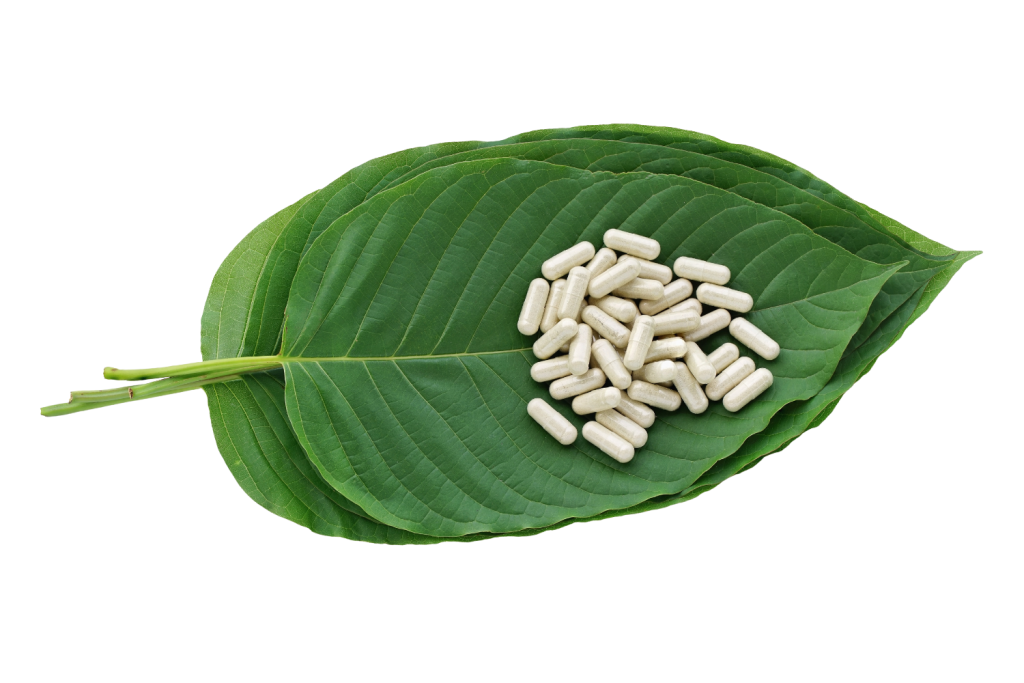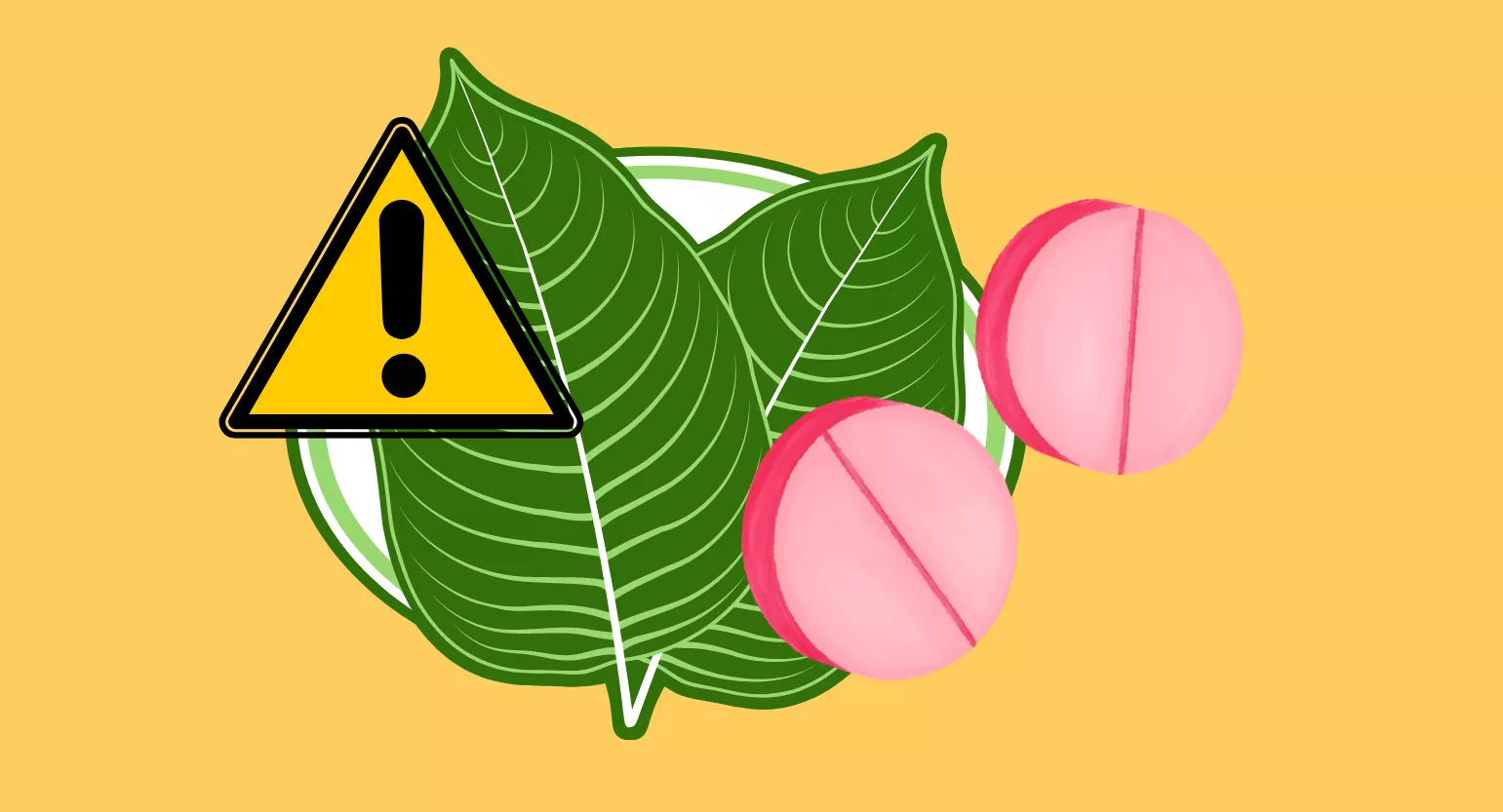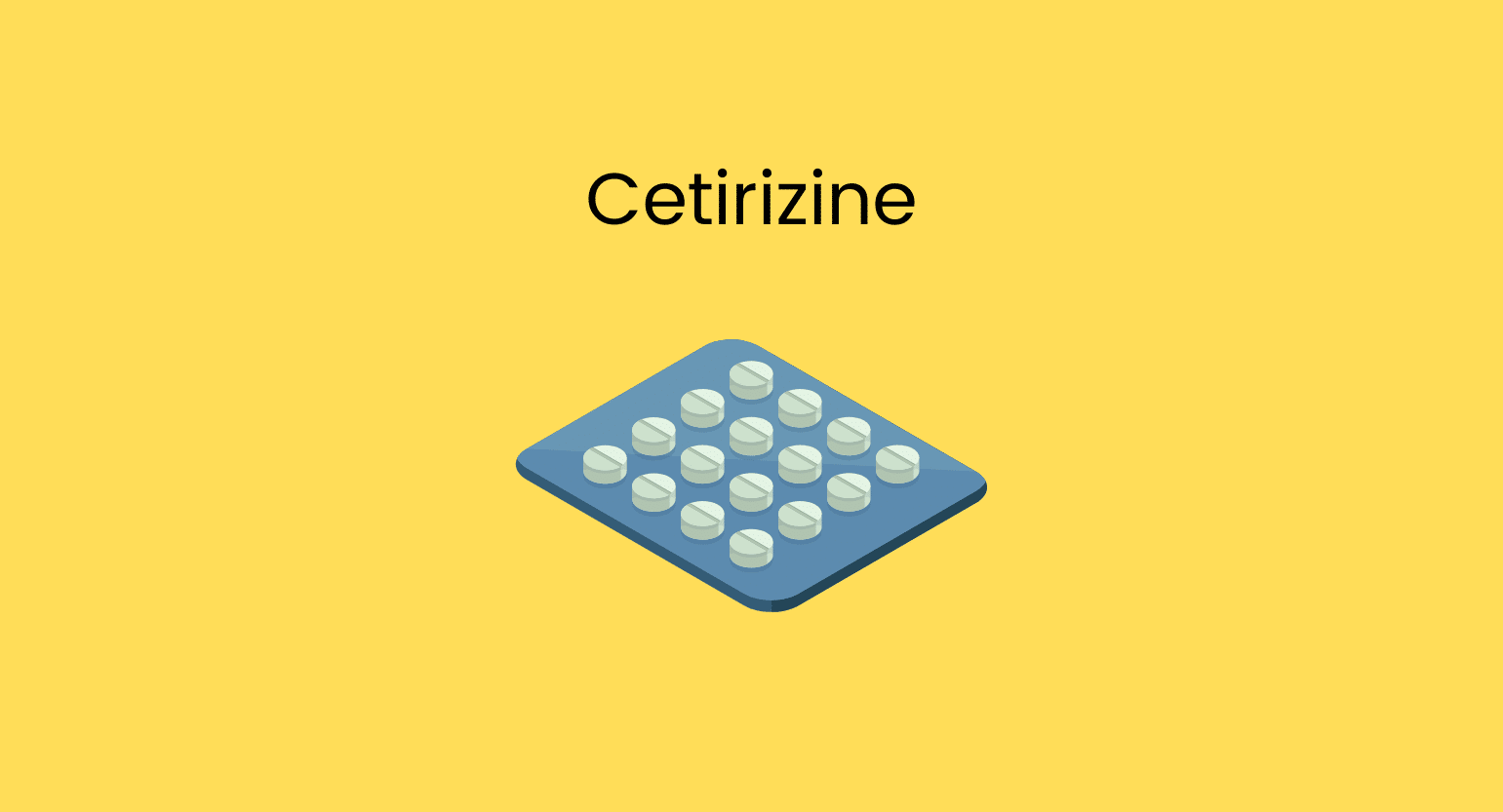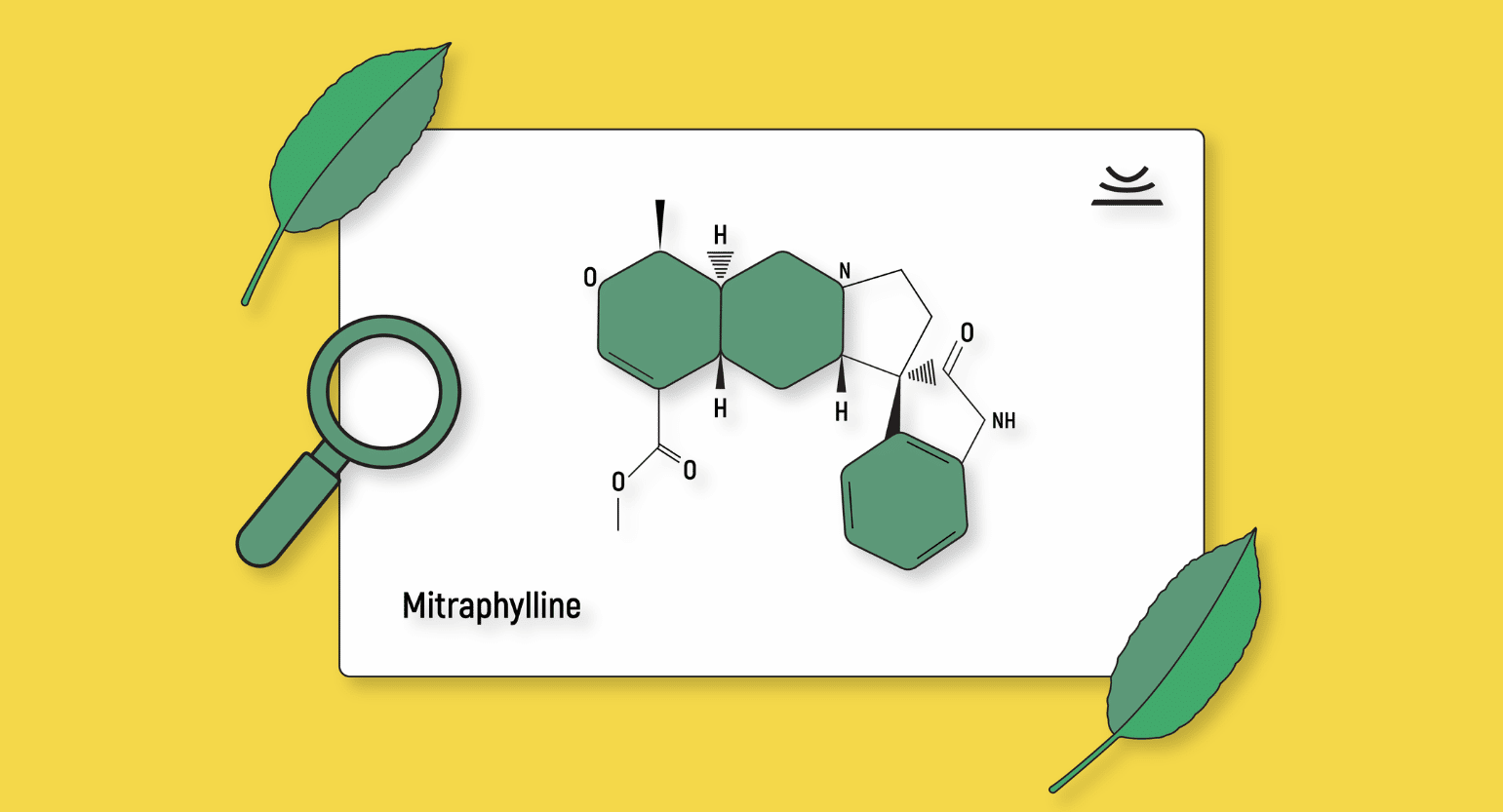Does Kratom Cause Withdrawal?
If you’re using kratom responsibly, it’s unlikely you’ll ever face addiction and withdrawal.
Responsible use isn’t difficult to achieve — far from what “responsible use” for other opiates looks like. Simply limit your use by taking breaks and using the smallest dose possible.
Kratom contains many active alkaloids and is considered an atypical opioid due to how it acts on many receptors — serotonin, adrenergic, dopamine, and opioid. This fact alone makes it much harder to become addicted.
Single compounds, which are found in prescription painkillers, target just one receptor. The body builds up a tolerance very quickly — leading to the effects we refer to as withdrawal.
It’s possible to use kratom almost daily and never become addicted — even chronic users that take large doses don’t always deal with addiction and withdrawal [6].
With that said, some people can still develop a strong dependency on kratom over long periods of time and will feel pretty awful whenever they stop taking it.
Related: The Truth About Kratom Addiction
Kratom Withdrawal vs. Opioid Withdrawal
Concern over kratom centers on its opiate-like tendencies. Its main alkaloids, mitragynine and 7-hydroxymitragynine, interact with opioid receptors, which is why kratom is such a good pain reliever.
How bad is it, though? Let’s compare it to other opioids.
Related: Opioid addiction statistics in the United States
Severity: Kratom vs. Opioid Withdrawal
Withdrawal symptoms from kratom aren’t exactly a walk in the park, but most users dealing with it find they are self-manageable, tolerable, and fairly mild [6]. Severe dependency can make users feel pretty terrible while the body gradually adapts and reverses the dependence it’s formed on the substance.
When we say kratom withdrawal is mild, this is in comparison to the withdrawal of opioids — not coffee or another mildly addictive substance — which involves persistent pain, dramatic mood swings, severe headaches, explosive vomiting and diarrhea, hot and cold flashes, insomnia, anxiety, seizures, and more.
Users with severe opioid withdrawal need to be hospitalized to manage symptoms.

Kratom withdrawal usually lasts for an average of 7-10 days. This is comparable, if not slightly longer, than opiate withdrawal, which can last anywhere from 5 to 20 days, depending on the detox program.
Severe addiction is usually weaned off over the course of several weeks to avoid the severe side effects of sudden withdrawal.
Common kratom withdrawal symptoms include:
- Agitation
- Anxiety
- Changes in mood
- Constipation
- Depression
- Diarrhea
- Headaches
- Insomnia
- Irritation
- Muscle aches
- Nausea & vomiting
- Runny nose and watery eyes
Common opioid withdrawal symptoms include:
- Anxiety, sometimes severe
- Cravings
- Dehydration
- Depression
- Diarrhea
- Hot and cold flashes
- Insomnia
- Lacrimation
- Muscle pain
- Nasal discharge
- Nausea
- Seizures
- Sweating
- Tachycardia
- Vomiting
Overdose Risk: Kratom vs. Opioids
Kratom interacts with opioid receptors but not in the same way other opioids do; it doesn’t recruit β-arrestin-2 [1]. The activation of β-arrestin-2 is the cause of most opioid side effects, primarily respiratory depression [2].

This activation of beta-arrestin-2 is the primary cause of opioid-related overdose deaths. Kratom lacks this action and is, therefore, substantially less likely to result in death from overdose.
A 2022 study compared the respiratory effects of mitragynine and oxycodone. Oxycodone produced significant respiratory depression, while mitragynine only produced sedation and no respiratory depression or life-threatening effects, even at the highest dose given. In fact, mitragynine produced “no evidence of respiratory depression,” even at doses many times higher than what people usually take. [5]
How Long Does Kratom Withdrawal Last?
The typical timeline for dealing with kratom withdrawal is about one week. However, this can vary depending on the person’s health, how addicted they are, etc.
Based on over 80 case reports and anecdotal reports, we’ve broken down the withdrawal period from kratom into the following timeline:
Phase 1: The First 48 Hours
The effects of kratom last about 6 hours, so the first signs of withdrawal will start to creep in around this time.
Over the next 48 hours, symptoms will continue to worsen as any remaining kratom alkaloids are eliminated from the body.
Depending on your individual habits, you may notice difficulty sleeping the first night.
Phase 2: Days 2–4
By the end of day two, your symptoms will be approaching their peak. This is the most intense part of the withdrawal, which will last for another two days before starting to subside.
You’ll likely experience diarrhea, nausea, lethargy and fatigue, irritability, headaches, and a strong urge to take more kratom.
The severity of this stage will depend on the extent of your addiction to kratom.
Phase 3: Days 5–14
Starting around day four or five, the severity of withdrawal symptoms will start to subside. Each day you’ll find you have more energy and fewer symptoms.

For mild addictions, you should be back to about 95% of normal by day 7. For more severe addiction, this could take up to 14 days before you reach 95%.
How Long Does Opioid Withdrawal Last?
The length and severity of withdrawal depend on the amount and extent of opioid use. Different opiates also cause varying degrees of symptoms, though short-acting ones tend to be worse.
Heroin withdrawal usually begins within 12 hours, peaks between 36-72 hours, and lasts 7-10 days.

Fentanyl starts after 8-16 hours, peaks at 36-72 hours, and lasts 5-8 days.
Methadone symptoms don’t start until 30 hours after the last use, peak between 72-96 hours, and can last up to 14 days.
Tips for Reducing Symptoms of Kratom Withdrawal
We have collected a list of tips to reduce or manage withdrawal symptoms. As long as you follow at least some of them, the withdrawal period will be more bearable.
- Sleep as much as you can
- Drink plenty of water to prevent dehydration caused by diarrhea or vomiting
- Eat small meals frequently to keep stomach discomfort at a minimum
- Take an over-the-counter pain reliever, antidiarrheal, or antiemetic
- Talk to a trusted someone about your feelings and state of mind
- Try relaxation techniques like meditation to ease the feelings of anxiety and pain

Additionally, do your best to keep your mind engaged and away from focusing on the craving for more kratom — this is key to getting through the withdrawal period for good.
Related: How to Quit Using Kratom
Can You Take Phenibut To Help With Kratom Withdrawal?
Phenibut is a nootropic and anxiolytic drug that isn’t approved in the USA but is available as a dietary supplement. Some people believe that phenibut is good for kratom withdrawal.
Taking kratom and phenibut together is a bad idea.
The risk of getting addicted is much higher than with kratom. Tolerance can happen quickly [4].

It’s better to steer clear of phenibut altogether, especially if you’re dealing with kratom withdrawal. Mixing the two together, even for the sake of quitting, can be dangerous and may only further complicate the problem you’re trying to solve in the first place.
Key Takeaways: Kratom Withdrawal Is Not As Severe As Opioid Withdrawal
Kratom can become habit-forming or addictive, but only if you use it too often or in large amounts. Withdrawal symptoms last about a week.
Kratom is legal in most areas of the U.S., but that doesn’t mean you should take huge quantities of the substance. Using 12 grams or less is a good way to avoid kratom addiction.
It also helps to take periodic breaks from using kratom to allow the body time to reduce tolerance formation and prevent full-blown dependency.
- Váradi, A., Marrone, G. F., Palmer, T. C., Narayan, A., Szabó, M. R., Le Rouzic, V., … & Majumdar, S. (2016). Mitragynine/corynantheidine pseudoindoxyls as opioid analgesics with mu agonism and delta antagonism, which do not recruit β-arrestin-2. Journal of medicinal chemistry, 59(18), 8381-8397.
- Mafi, A., Kim, S. K., & Goddard, W. A. (2020). Mechanism of β-arrestin recruitment by the μ-opioid G protein-coupled receptor. Proceedings of the National Academy of Sciences, 117(28), 16346-16355.
- Pergolizzi Jr, J. V., Raffa, R. B., & Rosenblatt, M. H. (2020). Opioid withdrawal symptoms, a consequence of chronic opioid use and opioid use disorder: Current understanding and approaches to management. Journal of clinical pharmacy and therapeutics, 45(5), 892-903.
- Jouney, E. A. (2019). Phenibut (β-phenyl-γ-aminobutyric acid): an easily obtainable “dietary supplement” with propensities for physical dependence and addiction. Current psychiatry reports, 21(4), 1-6.
- Henningfield, J. E., Rodricks, J. V., Magnuson, A. M., & Huestis, M. A. (2022). Respiratory effects of oral mitragynine and oxycodone in a rodent model. Psychopharmacology, 239(12), 3793-3804.
- Henningfield, J. E., Chawarski, M. C., Garcia-Romeu, A., Grundmann, O., Harun, N., Hassan, Z., … & Huestis, M. A. (2023). Kratom withdrawal: Discussions and conclusions of a scientific expert forum. Drug and Alcohol Dependence Reports, 7.











